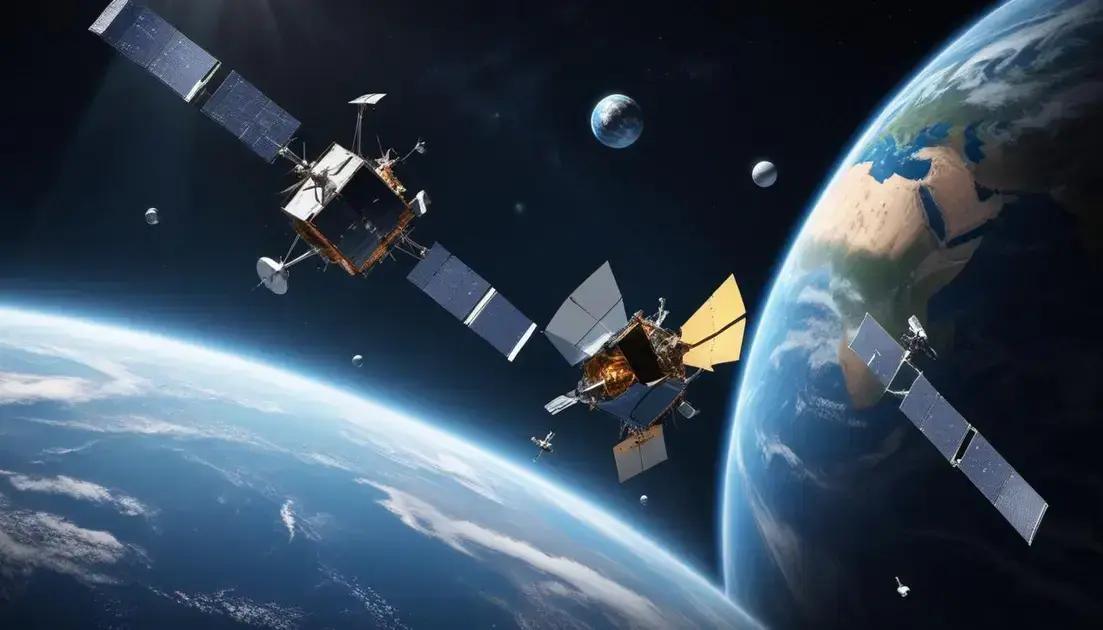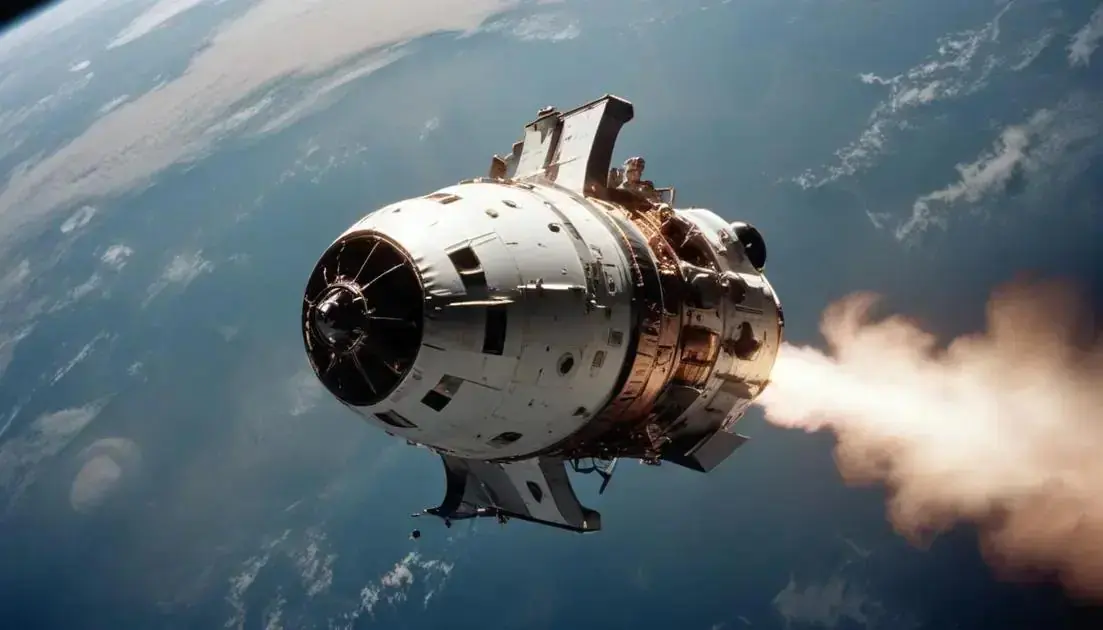
Artificial Satellites: Earth’s Eye in Space
Artificial satellites are crucial for advancing communication, climate monitoring, and security. They enable global connectivity, enhance data collection for environmental research, and improve disaster response efforts. As technology evolves, satellites will play an even greater role in scientific exploration and improving life on Earth through innovations like smaller, more efficient models, expanding internet access, and advanced monitoring systems.
Artificial Satellites have transformed our understanding of the universe, making it possible to connect and collect data like never before. Want to dive deeper? Let’s explore!
Revolutionizing Communication
Artificial satellites have greatly changed how we connect with one another. With their help, we can communicate instantly, no matter where we are on Earth. Think about it: you can chat with someone on the other side of the globe just like that!
Instant Connectivity
Before satellites, long-distance communication relied on slower methods such as telegraphs and phone lines. Now, satellites allow for seamless communication through mobile networks and the internet. This has made sharing information faster and easier, which is vital in today’s world.
Global Reach
Satellites make it possible for people in remote areas to access communication technologies. This is especially important for areas that don’t have strong landlines. With satellite phones and internet, everyone can join in, no matter their location.
Influence on Social Media
Social media platforms thrive on the connectivity that satellites provide. They enable users to share thoughts, photos, and news with friends and family across the world within seconds. This instant communication has changed how we interact and stay informed.
The Role in Emergency Services
During emergencies or disasters, satellites are crucial. They help in coordinating rescue operations and delivering vital information to those in need. For instance, the news can reach those affected quickly, helping save lives.
Clearly, artificial satellites have transformed communication. They allow us to share, connect, and respond in real-time, making our world smaller and more connected.
Impact on Climate Monitoring
Artificial satellites play a vital role in monitoring our climate. They collect data about weather patterns, temperatures, and other key factors. This information helps scientists understand how the Earth’s climate is changing.
Tracking Weather Patterns
Satellites constantly observe weather events from above. They provide real-time images of storms and clouds. This data is crucial for predicting severe weather conditions, such as hurricanes or heavy snowfall.
Understanding Climate Change
By analyzing data from satellites, researchers can see trends in climate change. They can track rising temperatures and melting ice caps. This helps raise awareness about global warming and its impact on our planet.
Improving Agriculture
Agricultural practices benefit greatly from satellite data. Farmers can monitor crop growth and soil conditions using this information. It helps them make better decisions about planting and irrigation, leading to healthier crops.
Disaster Response
In case of natural disasters, satellites provide crucial information. They help monitor changes in landforms and the environment. This information is vital for emergency responders to assess damage and deliver aid effectively.
Overall, artificial satellites are essential for climate monitoring. They give us the tools to understand our environment and respond to challenges effectively.
Enhancing Security Measures
Artificial satellites are key players in enhancing security measures worldwide. They help monitor borders and keep watch over critical areas. This adds an extra layer of safety for many regions.
Surveillance Capabilities
Satellites provide real-time surveillance images from above. They can spot unusual activities and send alerts to security teams. This keeps important areas secure, whether they are urban settings or remote locations.
Disaster Management
In emergencies, satellite data is crucial for managing responses. They can assess damage after natural disasters like earthquakes or floods. Knowing where to send help can save lives and resources.
Counter-Terrorism Efforts
Security agencies use satellite technology to track potential threats. This helps in identifying and neutralizing risks before they escalate. Satellites can provide detailed images of areas of concern.
Collaboration Across Borders
Countries share satellite data to enhance security. This collaboration helps monitor global issues like piracy and smuggling. Working together strengthens safety measures for everyone.
Overall, artificial satellites greatly improve security measures. Their ability to monitor and provide critical data keeps people safer across the globe.
Advancements in Global Science
Artificial satellites have greatly advanced global science. They help scientists study the Earth and gather data from space. This information is key for many fields, such as environmental studies and astronomy.
Earth Observation
Satellites continuously observe and collect data about our planet. They monitor changes in land use, vegetation, and natural disasters. This helps researchers understand how our environment is changing over time.
Climate Research
Satellites provide vital data for climate research. They track atmospheric conditions and ocean temperatures. Scientists can analyze this data to learn more about climate change and its effects.
Improving Communication in Science
With satellite technology, scientists can share their findings quickly. This improves collaboration among researchers all over the world. Instantly sharing data leads to faster discoveries and advances in various scientific fields.
Space Exploration
Satellites play a crucial role in space exploration. They help gather data about other planets and celestial bodies. The information collected helps scientists plan missions and study the universe more effectively.
Overall, artificial satellites are essential for advancements in global science. They provide invaluable data that helps us understand our world and beyond.
Future of Satellite Technology
The future of satellite technology looks bright and full of promise. New advancements are being made every day. These improvements will enhance our lives in many ways.
Miniaturization of Satellites
One exciting trend is the miniaturization of satellites. Smaller satellites can be built at lower costs. This opens the door for more countries and companies to launch their own satellites.
Better Data Collection
Future satellites will collect even more precise data. Improvements in sensors will allow for better monitoring of Earth’s environment. This helps in climate research and disaster response.
Increased Connectivity
Satellite technology will improve internet connectivity in remote areas. Companies are working on generating global internet coverage. This will help bridge the digital divide and connect more people.
Advanced Communication Systems
The next generation of satellites will enable faster communication. They will work together to provide seamless coverage across the globe. This technology will benefit businesses and individuals alike.
As we look forward, the future of satellite technology holds many exciting possibilities. These advancements will improve our daily lives and push the boundaries of what we can achieve.
Conclusion
In conclusion, artificial satellites have changed the way we understand and interact with our world. They play a crucial role in communication, climate monitoring, and security. As technology continues to advance, satellites will become even more essential for scientific research and daily life.
With innovations like smaller satellites and better data collection, we can expect greater connectivity and security. This offers promising solutions for global challenges, like climate change and disaster response. Investing in satellite technology is investing in our future. It helps us stay informed, connected, and prepared for what lies ahead.


